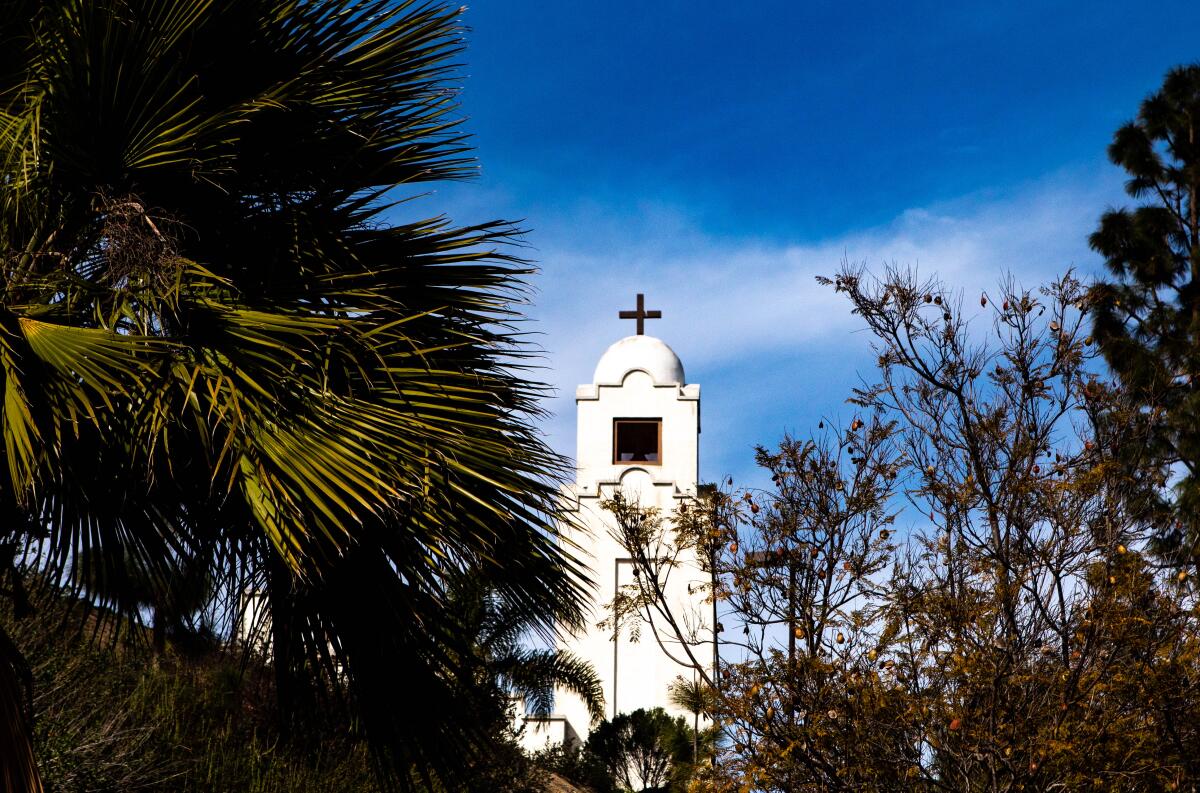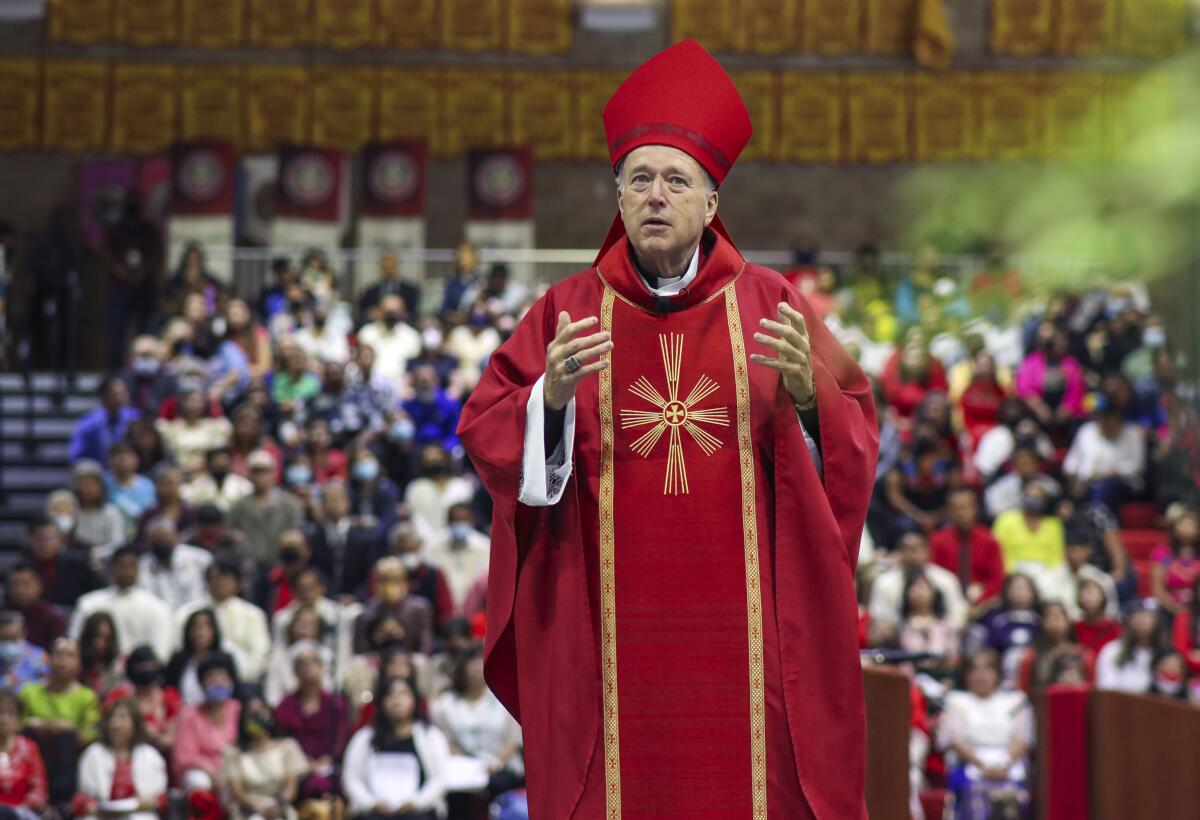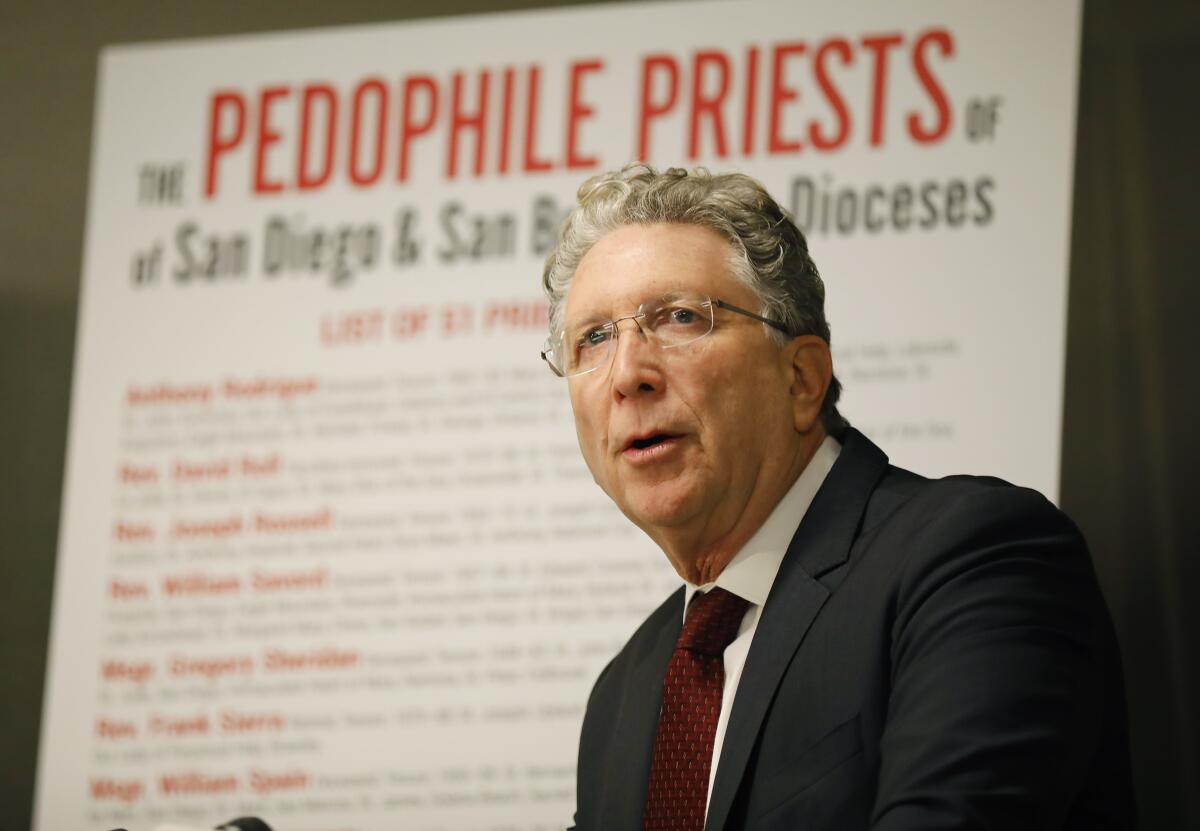San Diego Roman Catholic diocese ponders bankruptcy with sex-abuse lawsuits pending

- Share via
SAN DIEGO — The Roman Catholic Diocese of San Diego is warning it may have to file bankruptcy in the future because of the potential fallout from hundreds of pending lawsuits alleging sexual abuse by clergy over the last 75 years.
The warning comes nearly 15 years to the day since the diocese last sought the sanctuary of the bankruptcy code, filing for Chapter 11 reorganization in the face of 144 claims of sexual abuse by clergy. The bankruptcy was dismissed eight months later, after the diocese reached a settlement with the victims for $198 million.
Now the diocese might have to go down the same path, said Keven Eckery, the communications director for the sprawling diocese of 1.3 million Roman Catholics in San Diego and Imperial counties. On Thursday night at a 90-minute meeting with priests from the 96 diocesan parishes, Cardinal Robert McElroy informed them of the possibility the diocese could again file for reorganization under Chapter 11 of the U.S. bankruptcy code.
Lawyers representing accusers criticized the move and said the diocese was trying to avoid or lessen its liability for clergy misconduct, as well as pressure plaintiffs into seeking a settlement.
Irwin Zalkin, who represents about 120 of the 400 plaintiffs who have filed suits in San Diego Superior Court, said the diocese has enough assets to pay settlements. Zalkin represented hundreds of claimants in the 2007 cases and was instrumental in negotiating the final settlement.

He said in an interview that the announcement took him by surprise. Lawyers have been in mediation on the cases for the last two years, he said.
“For them to pull this stunt without warning us, and allowing us to give our clients a warning, is outrageous,” he said.
The lawsuits have all been coordinated in front of San Diego Superior Court Judge Eddie Sturgeon. The first case, one filed by Zalkin, is set to go to trial in July, he said.
At the briefing, Eckery could not say when or if the diocese would file for bankruptcy. He said such filing was not imminent and gave a time frame of late spring or summer for any possible decision by McElroy.
That would put it just before the first trial is set to begin.
Filing for bankruptcy prompts an immediate halt to any lawsuits against the person or entity filing for bankruptcy protection. That stay remains in effect for the duration of the bankruptcy.
If the diocese were to file in late spring or early summer, it would be similar to what happened in February 2007, when the diocese went into bankruptcy court just hours before a trial in the first of the 144 cases was set to begin. The trial never happened because the settlement resolved all the cases.
Eckery said the main driver behind a possible bankruptcy was the passage by the state Legislature in 2019 of AB 218, a law that reopened for three years a window for filing claims of sexual abuse that allegedly occurred long ago and would otherwise be barred by legal deadlines. The law applied not only to churches but any organization. That window closed at the end of 2022.
The law, which was signed by Gov. Gavin Newsom in October 2019, also contains a provision allowing a tripling of any monetary damages awarded if the organization was proved to have engaged in a cover-up.
Eckery said the majority of the claims date from 50 to 75 years ago, and no cases have been filed alleging abuse by a clergy member this century. No current priests are named in the suits, he said.
Still, he said that if the diocese settled for the same amount as the average case settled for in 2007 — a figure he gave as $1.4 million — the total bill would be in excess of $550 million.
“And frankly, we don’t have that kind of money,” he said.
Plaintiffs lawyers disagree and say the diocese has ample assets in property and other holdings to compensate their clients, an issue that could be hashed out in a separate lawsuit Zalkin said he will file next week alleging the diocese has engaged in a fraudulent effort to hide its assets over the past several years.

In 2010 he said the diocese formed individual corporations for each parish, then formed real-estate holding companies. Previously the assets were held in trust by the diocese and under control of the bishop. But nothing was transferred into those entities until 2019, after the bill was signed, he said.
“Why didn’t they transfer those assets in 2010?” he asked. The suit will argue the diocese was simply trying to divest itself of assets to separate corporations, thereby lowering the amount of money available to plaintiffs.
John Manly, another lawyer representing claimants in the current batch of cases, said he would oppose any bankruptcy filing by the diocese. “The Diocese of San Diego has a well-documented history of lying about its financial assets in order to dodge liability for their knowing concealment of child molesting priests,” he said in a statement.
Manly was referencing the 2007 bankruptcy case, which ended up being a bruising proceeding for the diocese. At one point, the judge overseeing the case appointed a forensic accounting expert to review 1,000 diocesan accounts and other parts of its finances.
The review found that the diocese had made conflicting statements about its assets and highlighted “purposeful attempts” to circumvent federal law and “openly questionable activities” relating to the bankruptcy filings.
When Judge Louise De Carl Adler formally dismissed the bankruptcy after the settlement was reached, she said that the diocese had enough assets then to settle all the claims without filing for bankruptcy.
“Chapter 11 is not supposed to be a vehicle, a method, to hammer down the claims of those abused,” she said then.
Eckery said that the diocese is not trying to leverage or pressure claimants here, but instead any bankruptcy filing would be so all people who claimed they were abused would be treated fairly.
“We have 400 claims,” he said. “How do you equitably make sure everyone who has a claim gets it treated correctly, and you have provided all the assets you can,” he said.
He said that parishioners at churches in the diocese will be told of the possibility of a bankruptcy filing at masses this weekend.
More to Read
Sign up for Essential California
The most important California stories and recommendations in your inbox every morning.
You may occasionally receive promotional content from the Los Angeles Times.











